|
Australian Magpie Gymnorhina tibicen
|
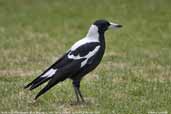 |
Australia
The Australian Magpie is distributed throughout most of Australia, including Tasmania, except the very arid interior and the
extreme north. They are also found in New Guinea.
|
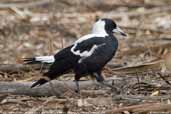 |
It is a social bird living in smallish groups and feeds on the ground where it preys on invertebrates.
It is a bird of open woodland and requires trees for nesting. Schodde & Mason mention that before settlement the species occurred in islands of open woodland "within a sea of denser forest
across the continent." This has led to a high degree of regional differentiation and intergradation as the species has spread in line with the
disappearance of the forest.
|
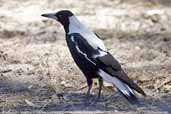 |
There are 9 sub-species only one of which is not found in Australia. I have tried to identify these photos by
sub-species but some may represent intergradations between sub-species.
Photos 1 (male) and 2 (female) are of the sub-species G. t. tyrannica. The back is uniformly white in males and clouded
milky-white in females. The female also has a broadened whitish collar. The sub-species is further distinguished by the very broad black terminal
band on the tail.
|
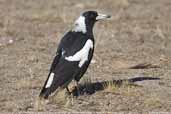 |
I think that photo 3 is also a male tyrannica though the black terminal band on the tail does not look so
broad. This photo was taken at Wyperfield, Victoria as was photo 4 which shows a totally different plumage most notably the black rather than whitish
back. I am assuming that this bird is of the race terraereginae and that the milky-grey collar suggests that it is a female. Wyperfield is in
the zone of intergradation between these two sub-species. |
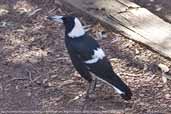 |
Photo 5 was taken at Wilpena Pound in the Flinders Range of South Australia and I believe this shows a male
terraereginae with the white collar hardly extending onto the mantle and a narrow black terminal band on the tail. |
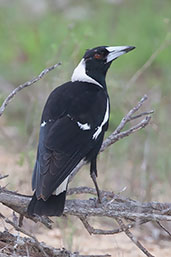 |
Photo 6 was taken at Kuranda, Queensland and is definitely of the sub-species terraereginae with the
entirely black back. In this race the male and female look similar but with the female having a milky-grey collar. I think this bird is a female
though the collar is not showing very well. |
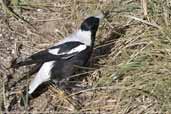 |
Photo 7 was taken at Port Elliot in South Australia and I believe shows a female of the sub-species
telonocua. This race has a white back in the male while in the female the back is a dull mid-grey with white edging and the whitish collar is
narrower. The terminal black band on the tail is medium sized. |
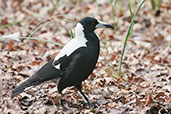 |
Photo 8, taken at Adelaide, shows a male of the race telonocua with its white back. |
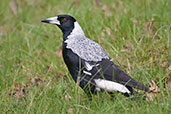 |
Photo 9, also taken at Adelaide, shows a female of the race telonocua showing the mid-grey back with white
feather edging. |
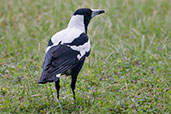 |
Photo 10, taken at Porongurup National Park, Western Australia, shows a male of the sub-species dorsalis
with its all white back. |
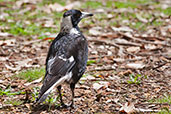 |
Photo 11, taken at Busselton, Western Australia, shows a female of the sub-species dorsalis with its black
back with white feather edging. |
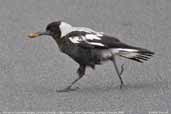 |
Photos 12 and 13 were taken in Tasmania and so are of the sub-species G. t. hypoleuca. The mottling on the
underparts and darker bill indicate that this is an immature. |
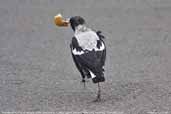 |
|
|
|












